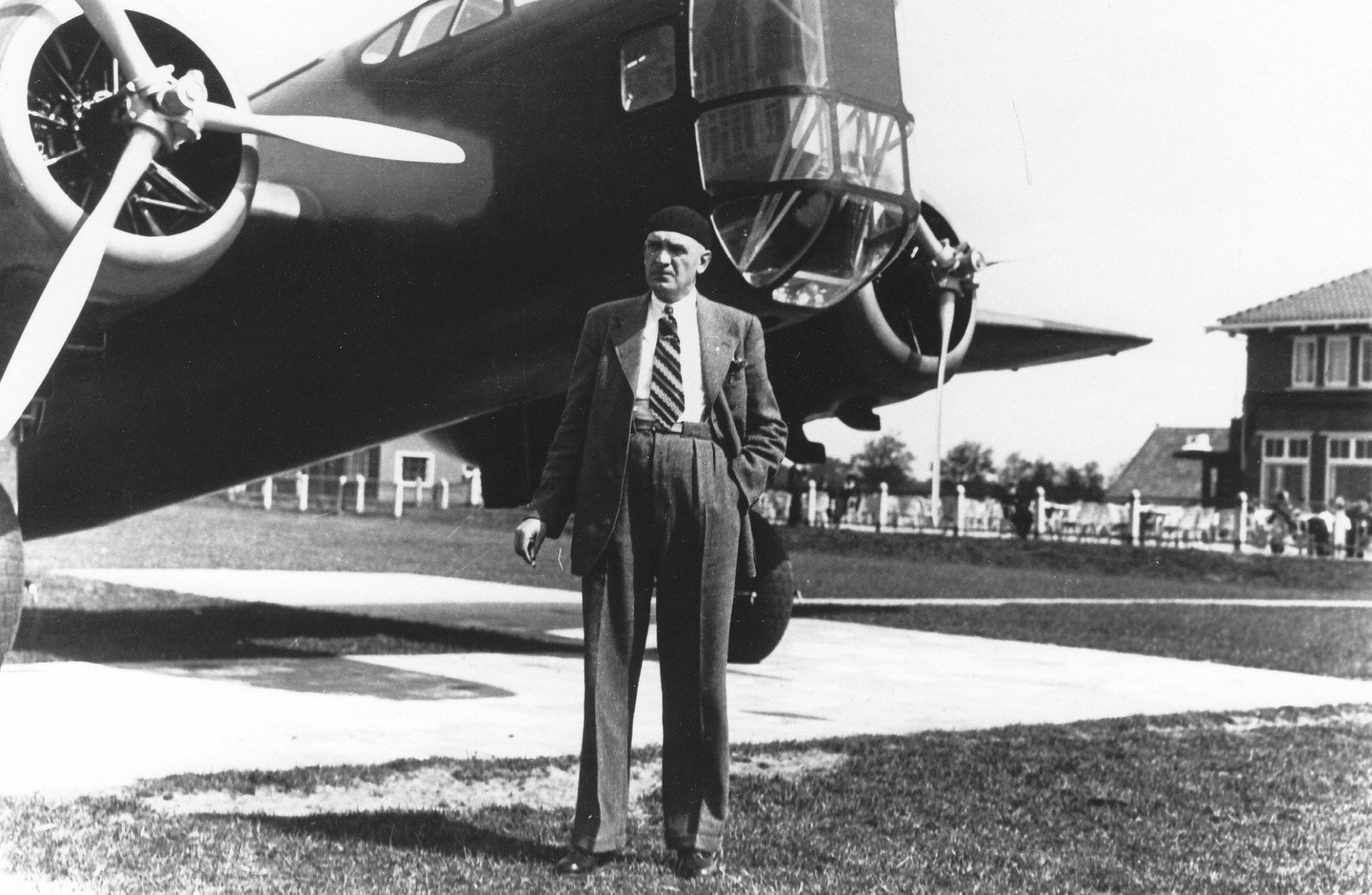Emil Meinecke
Emil Meinecke, born July 20, 1892 in Mannheim, Germany, was a pilot in the German army during the First World War.
He was apprenticed as an aircraft mechanic at a young age and graduated in 1910.
After learning to fly with German aviation pioneer Karl Jatho, he achieved six victories in aerial combat in the First World War. This within a little over a year.
For his victories during those dogfights, Lieutenant Meinecke also received several military awards.
Meinecke left military service in 1919 and left for the Netherlands to become an aircraft mechanic at Fokker.
Due to his flying qualities, he was soon deployed at Fokker to perform test and acceptance flights.
Later Meinecke was also naturalized as a Dutchman.
At the beginning of his period with Fokker as a test pilot he mainly did this on aircraft that were sold to Russia.
He also accompanied these aircraft in the transport of these aircraft by boat and delivered them to Russian customers.
And so Meinecke soon became a test pilot instead of a mechanic at Fokker.
Between 1925 and 1927, Meinecke was technical representative for Fokker in Bolivia. During the war between Bolivia and Paraguay, Fokker wanted to sell his planes in Bolivia.
In 1929, Meinecke was officially appointed as a test pilot at Schiphol, where he died the test pilot Ir. Bertus Grassé succeeded.
After this he made the first flight in dozens of Fokker aircraft, followed by hundreds of acceptance and test flights for Fokker aircraft.
Among others, the Fokker D-21 and the large four-engined F-36 in 1936 were flown for the first time by Meinecke.
During the Second World War, Meinecke was a German in the Netherlands between shore and ship, his sympathy went to the Dutch side.
He remained a test pilot at Fokker, ironically he was the test pilot of many Bucker Bestman aircraft built for the German occupier at Fokker.
In 1950 Meinecke emigrated to Canada to live with his daughter, he became a Canadian citizen in 1956 and died on May 2, 1975 at the age of 82.
(partial) source: Librariana
He was apprenticed as an aircraft mechanic at a young age and graduated in 1910.
After learning to fly with German aviation pioneer Karl Jatho, he achieved six victories in aerial combat in the First World War. This within a little over a year.
For his victories during those dogfights, Lieutenant Meinecke also received several military awards.
Meinecke left military service in 1919 and left for the Netherlands to become an aircraft mechanic at Fokker.
Due to his flying qualities, he was soon deployed at Fokker to perform test and acceptance flights.
Later Meinecke was also naturalized as a Dutchman.
At the beginning of his period with Fokker as a test pilot he mainly did this on aircraft that were sold to Russia.
He also accompanied these aircraft in the transport of these aircraft by boat and delivered them to Russian customers.
And so Meinecke soon became a test pilot instead of a mechanic at Fokker.
Between 1925 and 1927, Meinecke was technical representative for Fokker in Bolivia. During the war between Bolivia and Paraguay, Fokker wanted to sell his planes in Bolivia.
In 1929, Meinecke was officially appointed as a test pilot at Schiphol, where he died the test pilot Ir. Bertus Grassé succeeded.
After this he made the first flight in dozens of Fokker aircraft, followed by hundreds of acceptance and test flights for Fokker aircraft.
Among others, the Fokker D-21 and the large four-engined F-36 in 1936 were flown for the first time by Meinecke.
During the Second World War, Meinecke was a German in the Netherlands between shore and ship, his sympathy went to the Dutch side.
He remained a test pilot at Fokker, ironically he was the test pilot of many Bucker Bestman aircraft built for the German occupier at Fokker.
In 1950 Meinecke emigrated to Canada to live with his daughter, he became a Canadian citizen in 1956 and died on May 2, 1975 at the age of 82.
(partial) source: Librariana


